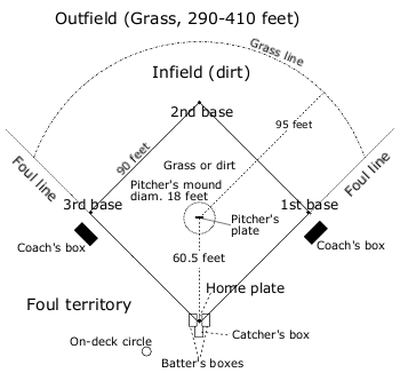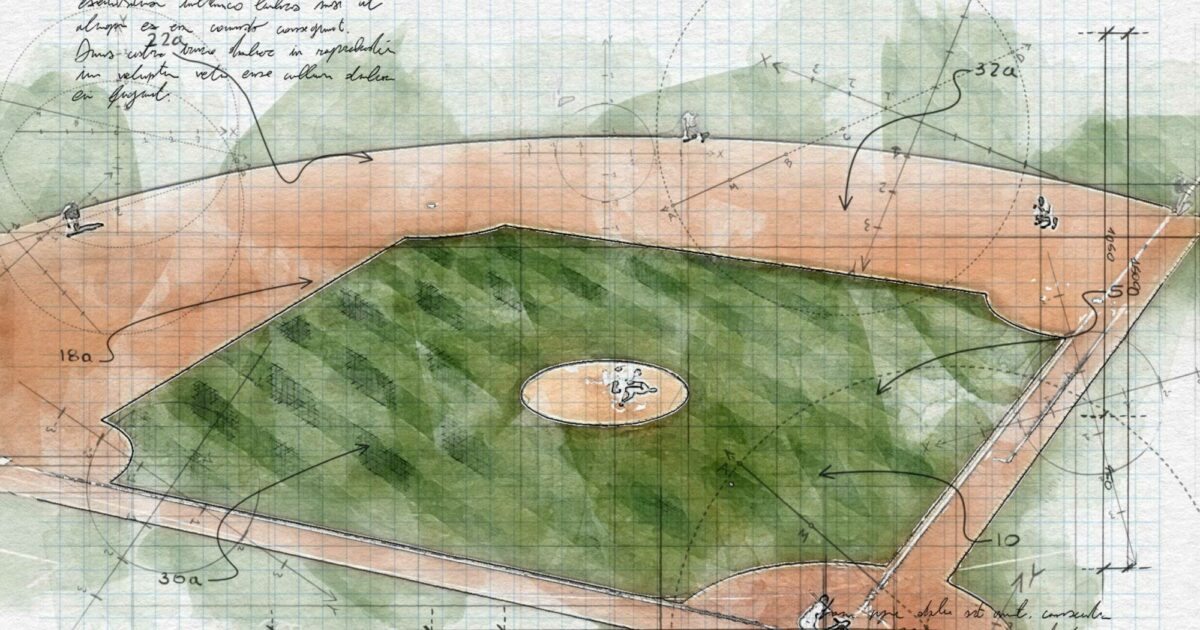No, all baseball fields are not the same size; they can vary in dimensions. Baseball has a rich history, and one of the most important aspects of the game is the field itself.
While the general layout and dimensions of a baseball field remain consistent, variations in size do exist. Major League Baseball (MLB) fields must adhere to certain guidelines, but even within those parameters, slight differences can be found from one stadium to another.
The overall dimensions of a baseball field include the distance from home plate to the outfield walls, the shape of the outfield, and the placement of bases and pitcher’s mound. These variations can have an impact on gameplay and strategy, making each field a unique and important part of the sport. Let’s delve deeper into the dimensions and characteristics of baseball fields.

Credit: www.sciencebuddies.org
Standard Baseball Field Dimensions
Are all baseball fields the same size? The answer is no. Baseball field dimensions can vary depending on the league, level of play, and other factors. However, there are standardized dimensions that are widely followed in professional and amateur baseball. Understanding the layout and specific measurements of a standard baseball field is essential for players, coaches, and fans alike.
Layout Of A Standard Baseball Field
A standard baseball field consists of various components strategically placed to create a balanced playing environment. The key components include:
- Pitcher’s Mound
- Home Plate
- Bases
- Infield
- Outfield
- Foul Lines
- Backstop
Specific Dimensions Of Each Component
Here are the specific dimensions of each component of a standard baseball field:
| Component | Measurement |
|---|---|
| Pitcher’s Mound | 60 feet 6 inches (18.44 meters) from home plate |
| Home Plate | 17 inches (43.18 centimeters) wide |
| Bases | 90 feet (27.43 meters) apart |
| Infield | Varies in size, but typically around 90 feet (27.43 meters) from base to base |
| Outfield | Not specified but typically extends to the outfield wall |
| Foul Lines | Extend from home plate to the outfield wall |
| Backstop | Not specified but typically located behind home plate |
Reasons For Standardized Dimensions
The standardized dimensions of a baseball field serve several important purposes:
- Promotes fair play: Standardizing the field dimensions ensures a level playing field for all teams. It eliminates any potential advantages or disadvantages related to field size.
- Consistency in the game: Following standardized dimensions allows players, coaches, and officials to develop a deep understanding of the game and its strategies. It enables consistent training, tactics, and game decision-making.
- Safety and player development: Uniform dimensions help ensure the safety of players by providing a consistent playing surface. It also allows players to develop their skills in a predictable environment.
- Regulatory requirements: Governing bodies, such as Major League Baseball and Little League, have established specific field dimensions as part of their rules and regulations. Adhering to these dimensions is necessary for organized play.

Credit: coversports.com
Benefits Of Varied Baseball Field Dimensions
Baseball, often referred to as America’s favorite pastime, is a game that is deeply rooted in its traditions. From the crack of the bat to the cheers of the crowd, every aspect of the game is meticulously crafted to create an unforgettable experience. One element that adds an interesting twist to the game is the varied dimensions of baseball fields.
Enhanced Strategic Play
One of the key benefits of having varied baseball field dimensions is the enhancement of strategic play. Unlike other sports where the playing surface remains constant, baseball fields offer a unique opportunity for teams to adapt their strategies based on the dimensions of the field. This means that teams can tailor their gameplay to take advantage of the field’s peculiarities and create innovative tactics that keep the opposing team on their toes.
Impact On Player Performance
The dimensions of a baseball field can have a significant impact on player performance. A smaller outfield, for example, requires outfielders to have quick reflexes and be skilled at catching fly balls. On the other hand, a larger outfield might favor players with exceptional speed and the ability to cover more ground. These variations in field dimensions can challenge players to showcase their unique skills and add an element of excitement to the game.
Effect On Game Dynamics And Excitement
The varied dimensions of baseball fields also have a direct effect on the game dynamics and overall excitement. Each field comes with its own set of challenges, such as shorter foul lines or deeper center fields. These variations create opportunities for both teams to showcase their strengths and exploit their opponents’ weaknesses. As a result, the game becomes more unpredictable and thrilling, ensuring that spectators are on the edge of their seats throughout all nine innings.
It’s evident that the benefits of varied baseball field dimensions go beyond simply adding variety to the game. Enhanced strategic play, the impact on player performance, and the effect on game dynamics and excitement all contribute to making each game a unique and memorable experience. As baseball embraces its rich history while evolving with the times, the varied dimensions of its fields serve as a testament to the sport’s ability to constantly innovate and captivate fans old and new.

Credit: www.quantamagazine.org
Frequently Asked Questions On Are All Baseball Fields The Same Size?
Are All Baseball Fields The Same Size?
No, baseball fields can vary in size based on the level of play. Major league fields have different dimensions than little league fields. The distance between the bases and the outfield dimensions can also differ from one field to another.
It’s best to check the specific regulations for the level of play you are interested in.
Conclusion
Baseball fields may seem uniform, but they are not all the same size. The dimensions of a baseball field can vary, affecting the dynamics of the game. From the distance between bases to the outfield dimensions, each field has its own unique characteristics.
These variations add an element of excitement and strategy to the game, making each field an important part of baseball’s rich heritage. Whether you’re a player, a fan, or simply curious about the sport, understanding the differences in field sizes can enhance your appreciation for America’s favorite pastime.
So next time you watch a game, take a moment to appreciate the distinct dimensions that make each baseball field special.

General Manager & Auditorial Head.
Killian Jake is a World Sports Traveler and hobbyist sports lover. By exploring different sorts of playing modules like indoor, outdoor, and many more. As for professionalism and writing, it’s helpful to give you the right suggestions on different games and sports.





